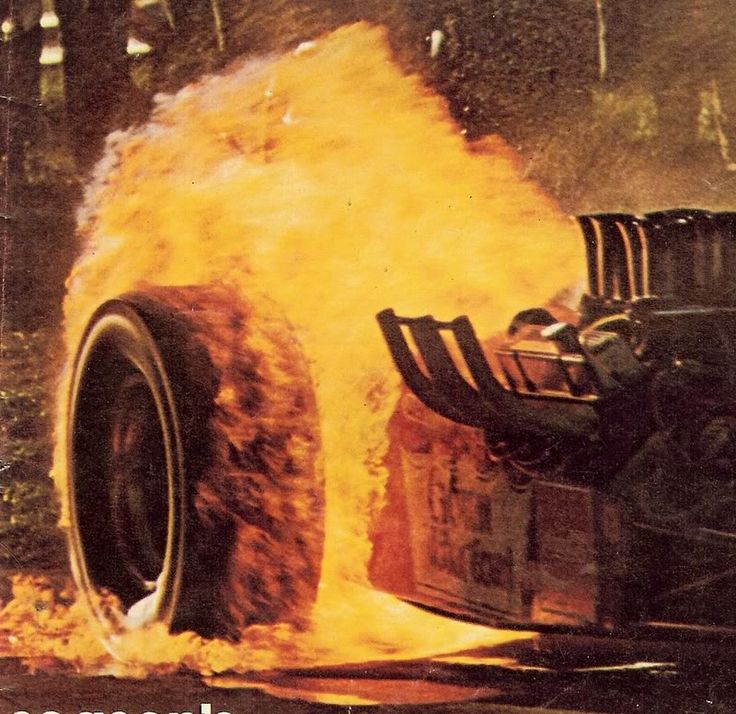The Drive and its partners may earn a commission if you purchase a product through one of our links. Read more.
If I am rubber, and you are glue, I can do burnouts, and you can’t. *sticks tongue out*
Childish sayings aside, burnouts are one of those things you can love and hate at the same time. They might be fun to do, but you also understand why they have a negative reputation—and why Mustangs are the cliche car associated with the term...
In the right situation, burnouts do have a genuinely real purpose, but that situation is not a busy street or a packed Walmart parking lot. Everybody deserves to try it at least once, and we’d like to help you figure out the proper time and place to do it.
Unsure how it works? The Drive’s smokey editors will tell you how and when to let the clutch fly. Let’s get to it!
Before we get into any of this, we need to drop some disclaimers on you.
Only attempt burnouts under the supervision of professionals in controlled areas where it is legal. The Drive is not responsible for any damage, accidents, or any legal consequences you may encounter. Likewise:
Burnouts are illegal in virtually all places.
Burnouts can be dangerous.
Burnouts can ruin car parts.
Burnout can result in redlining and hurt your car’s engine.
Burnouts are loud and annoying to most people.
Burnouts are bad for the environment and your health when smoke is injested.
Burnouts mark up the pavement.
S, R, and T are the only letters left after the burnouts burnout., FCABurnout is the act of spinning your car’s wheels while staying in place, at least initially. The friction of the rubber spinning on pavement produces showy billows of smoke.
Burnouts should not be taken lightly. Heed these precautions if you’re going to attempt burnouts.
Attempting a burnout for the first time at an auto show or in some other busy parking lot is the worst possible thing you can do, and you might do some damage to your car and/or others. With a professional on hand, go to a completely empty lot with scarce light poles, and practice doing them with no people or cars around you.
If you smell something other than burnt rubber, it might be your clutch. Back off and let it cool down before attempting again. You might not be lifting off the clutch fast enough, and you never want to ride the clutch.
Everybody has seen the videos of a burnout turning into an accident that caused tens of thousands of dollars of damage. Never attempt burnouts near poles, walls, curbs, islands, parking barriers, or anything else your car could run into.
Anytime somebody does a burnout, there are risks of flying road debris, flying broken parts, and rogue Ford Mustangs.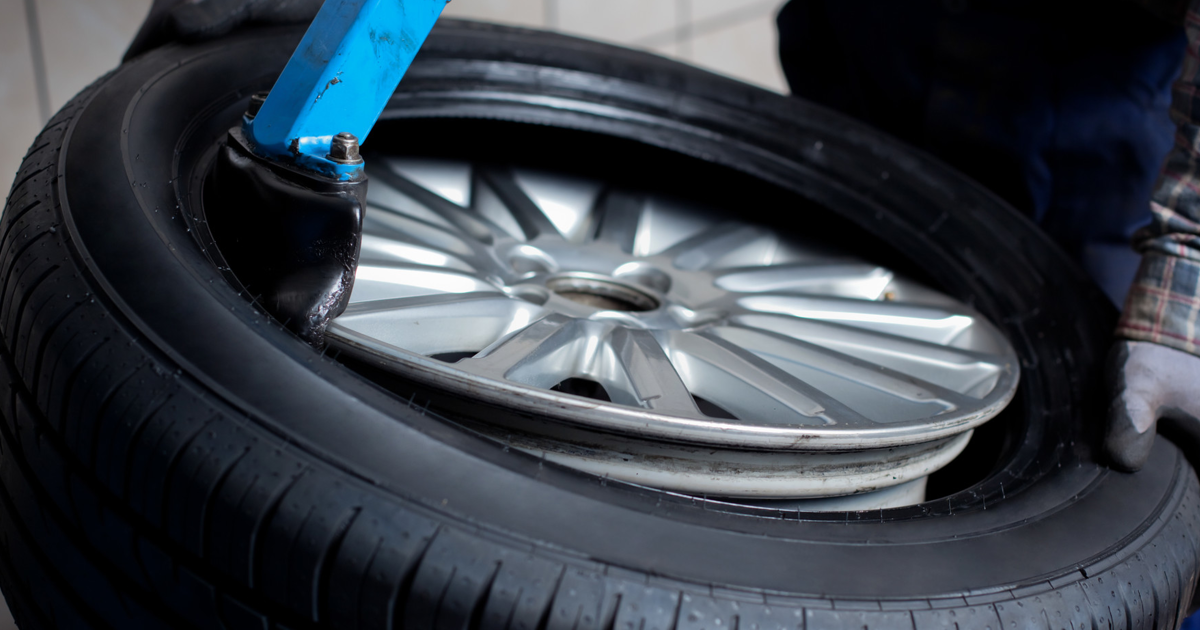 Keep your distance if you’re watching one, and make sure nobody is around if you’re doing one.
Keep your distance if you’re watching one, and make sure nobody is around if you’re doing one.
Because life is about the little things that make you happy. It’s crucial to find the small Ws that put a smile on your face, even if it comes with a minor cost. That’s why we’re all here to talk about cars, right?
In drag racing, there is a real purpose for burnouts. Cold tires have less grip and make for slower launches. So, drag racers usually spin the tires a bit to warm them up. Warmed up, they can grip the road better. This also helps clear the tire of any debris before entering the race.
A burnout before drag racing is expected., FCAIf you can use a clutch, you can do a burnout.

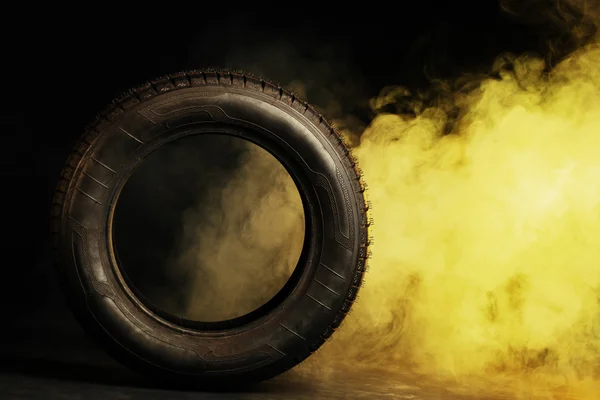 To repeat, this isn’t an exact range, and you’ll have to know and understand your car to know how high you should rev it. You need enough power not to stall, but not too much that you’ll burn your clutch. Just be careful not to get too close to redline.
To repeat, this isn’t an exact range, and you’ll have to know and understand your car to know how high you should rev it. You need enough power not to stall, but not too much that you’ll burn your clutch. Just be careful not to get too close to redline.Automatics can do it too!

You’ve got questions, The Drive has answers!
A. Yes. In addition to shredding precious tire tread and brake pads, you are also putting a lot of stress on the engine, drivetrain components, and everything else in your car that wasn’t designed to do extended burnouts in place.
A. Burnouts are illegal in virtually all public places.
A. Any car with a lot of power, a manual transmission, and rear wheel drive.
A. They can! At the end of the day, burnout is achieved by using the throttle and the brakes at the same time, so you’re trying to stop something that’s spinning very fast. That’s going to wear your brakes.
That’s going to wear your brakes.
A. This will depend on the car, the tire, the driver, the location, and numerous other factors. Read more in our guide, How Long Do Tires Last and When Should I Replace Them?
A. Hold the gas and the brake, which should be the left and right triggers. On computers, use W and S.
We’re here to be expert guides in everything How-To related. Use us, compliment us, yell at us. Comment below and let’s talk! You can also shout at us on Twitter or Instagram, here are our profiles.
Jonathon Klein: Twitter (@jonathon.klein), Instagram (@jonathon_klein)
Tony Markovich: Twitter (@T_Marko), Instagram (@t_marko)
Chris Teague: Twitter (@TeagueDrives), Instagram (@TeagueDrives)
by Al Seizovic
73 shares
Last Updated on July 15, 2022
Pulling up to the stoplight with your 2002 Hyundai Tibouran at midnight, you get the bright idea: “I’m going to do a burnout, there’s nobody around”.
You throw the automatic transmission in “1”, hold the brake and the accelerator, then release the brake expecting to spin your tires like all the Fast and Furious movies!
Nothing happens? Well that’s probably because you didn’t read this AWESOME how-to guide on burnouts with an automatic transmission.
See Also: Measuring Horsepower (HP vs BHP vs WHP)
Table of Contents
They ENHANCE your life! There are few things more satisfying in the automotive landscape than an awesome burnout. The tires are spinning, you’re vaporizing tires, breathing in smoke, making a bunch of noise, and generally pissing off all of the grumpy people around you. It’s great!
The tires are spinning, you’re vaporizing tires, breathing in smoke, making a bunch of noise, and generally pissing off all of the grumpy people around you. It’s great!
Burnouts come in all shapes and sizes. You’ve got the big muscle car angry burnouts that you might see accompanied with a Dodge Charger, Ford Mustang, and maybe even an E63 AMG Mercedes!
On the other side of the spectrum, you have the squealy, nasty rubber burning sessions of the Honda Civic variety. You’ll be able to spot this species in the wild by a loud, raspy popping noise paired with a front wheel drive (FWD) hatchback looking as if it’s floating on clouds instead of front tires.
This is because those front tires are moving so fast as to create friction and heat, allowing the driver to burn rubber through the intersection. This can also be found with Subaru Impreza WRXs when they do their all wheel drive (AWD) launches from intersection to stoplight.
You may also spot a motorbike doing a burnout at a stoplight, which is another being altogether.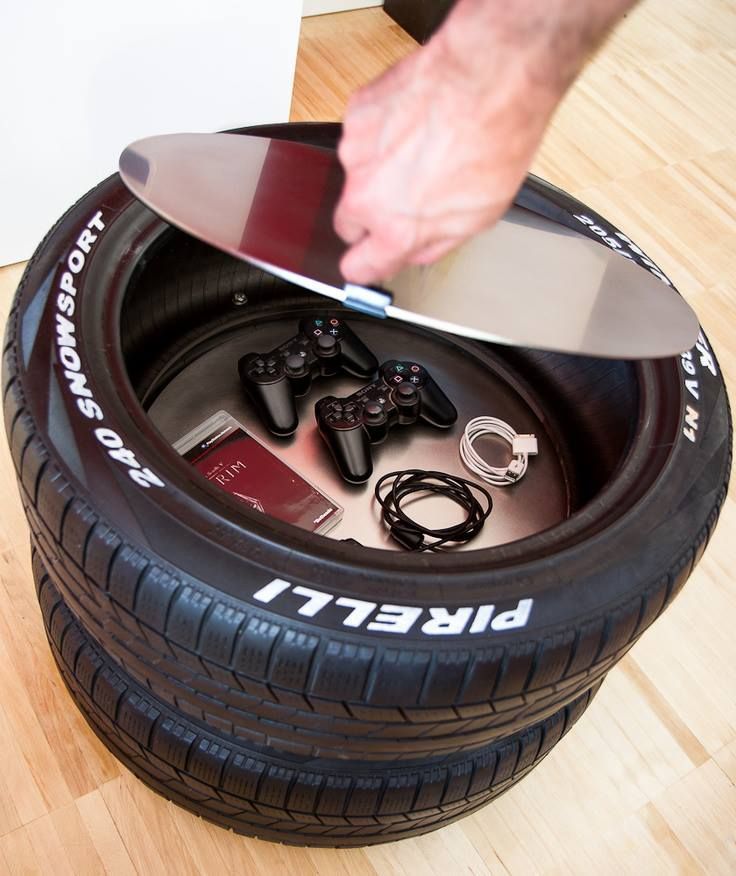 They’ll get all of the weight on their front tire, then rev the throttle all the way to the rev limiter making a WAHWAHWAHWAHWAHBRINNNGGGG sound as their tires reach terminal velocity.
They’ll get all of the weight on their front tire, then rev the throttle all the way to the rev limiter making a WAHWAHWAHWAHWAHBRINNNGGGG sound as their tires reach terminal velocity.
This behavior has been studied by biologists for at least a hundred years, yet the motives around displays such as this still perplexes us. Is it to throw up a middle finger to the law? Are they trying to warm up their new tires to grip more during an impending drag race? Or, do they simply just want to do it, so they do it?
Read Also: Differences Between AWD and 4WD
Although I don’t have a source on this claim, I feel it’s safe to say most of the burnouts you’ve seen have been in a manual transmission, rear wheel drive (RWD) car as it’s much easier. Just throw the transmission into first gear, push in the clutch, mash on the accelerator to build up the revs, then release the clutch quickly and you’ll be peeling out in no time.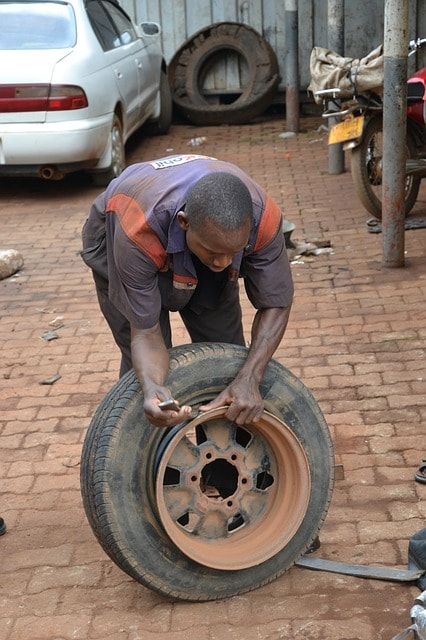
Of course, this will happen providing you have enough power to break those tires loose. If not, you’ll roast your clutch, explode your drive shaft, blow up your diff, or destroy your transmission. That energy has to go somewhere, and if your tires are too sticky, you’ll break something.
Related: How to Identify Your Car’s Transmission
If you want to do a burnout, you are pretty much playing with fire here. Unless you have express permission by a landowner or it’s on your own property, you could get fined upwards of $1000 for damaging property.
This is because most parking lots have lines painted on them, and spinning your tires and otherwise acting recklessly is going to wear out those lines. Then, the property owner is going to have to pay to repaint those lines which will cost them money.
This is a first hand account, so just remember, the cameras on many of these private buildings surrounding parking lots are a lot better than you think.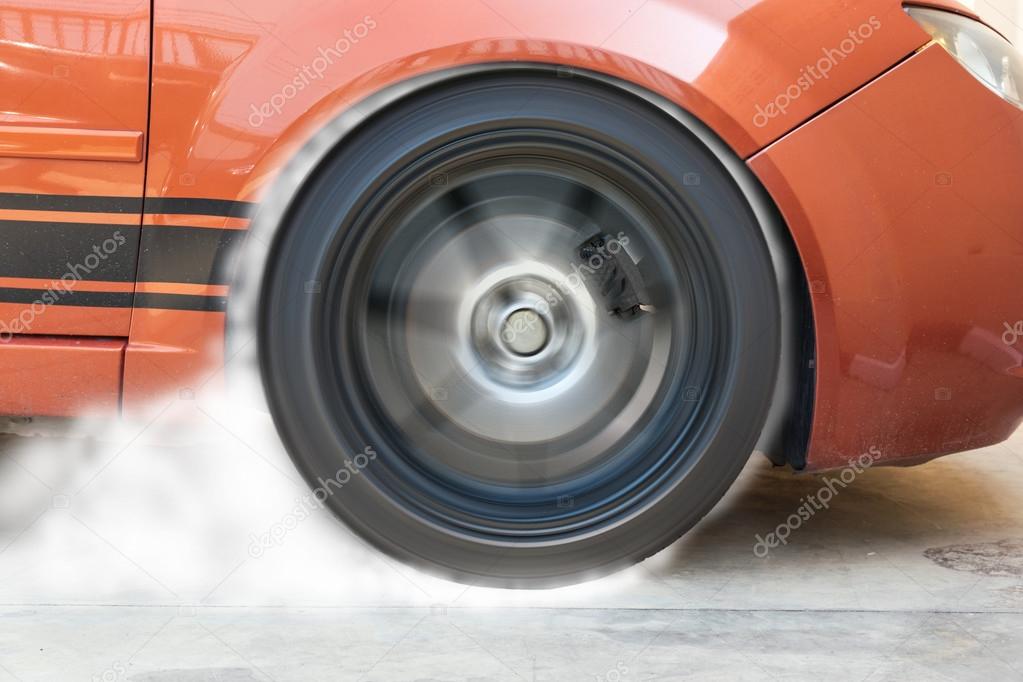 Hint hint: they can read your license plate!
Hint hint: they can read your license plate!
If you’re thinking about doing a burnout on a public road, there are some more considerations you should take. First, make sure there aren’t any people around, in the way, or in the oncoming traffic lane. You don’t want to end up like a Ford Mustang driver leaving every “cars and coffee” meetup (example below).
Also, keep in mind, this all needs to be considered before you do anything at all burnout or drift wise, as I’m already assuming you’re ok with breaking whatever law is preventing this in your area. From experience, we’re all going to do things that aren’t legal in our cars, and that just comes with the territory of owning an enthusiast car.
Also, there’s nothing in this article that will protect you from the law, you just need to be smart about this and never hurt another motorist or pedestrian.
See Also: What Can Happen When You Engage the Parking Brake While Driving
As stated above, don’t hurt anything other than your tires. Additionally, you’ll need to make sure you are in control of your vehicle because that’s your responsibility as a motorist.
Being able to do a sick burnout in Need for Speed doesn’t mean you can do the same thing on real life. Even better, sign up for a performance driving course to get real instruction and experience in a safe environment.
It’s also good to know that you’ll be wearing out parts quicker when you do burnouts in your car, so pay attention to the color of your transmission fluid, the smell of your clutch, and just check your car more often. As you add heat, power, and force, something is going to break.


If you aren’t getting the results you want, try some older rubber. Your local tire shop should have some old tires that aren’t being used, maybe they’d even give them to you!
Another idea is to spray water on the ground around the tire that you are trying to spin so you can decrease the traction, thus increasing the ease at which you can burn rubber. Oil and whatever other lubricant you want works too.
Also, I want to mention that if you can’t disable the traction control on your vehicle, you probably won’t be able to get very far on this quest because your vehicle will be fighting you every step of the way.
Categories General Tags automatic transmissionAsk a question, get an answer ASAP!
Burnout - slip, in professional slang, means warming up the rubber on a car standing still, that is, slipping of the tires themselves and rubbing them on the asphalt .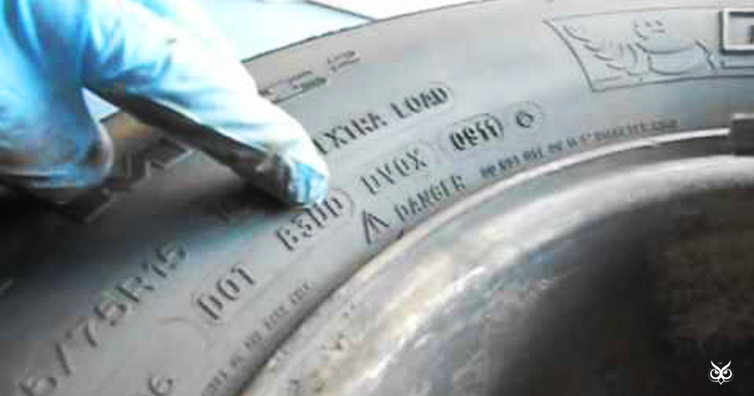 As a result of the contact of tires with a hard asphalt surface, they begin to warm up quickly and smoke appears from under them.
As a result of the contact of tires with a hard asphalt surface, they begin to warm up quickly and smoke appears from under them.
Burnout, the so-called slip, is used before races on the drag racing track for better tire grip, as well as for better and more stable handling of a very powerful car on a rally track.
From the category of a necessary action, burnout quickly moved into the category of a kind of entertainment, thus becoming an element of a certain show where its participants show a higher level of car control using all its capabilities.
For a burnout, i.e. for slipping, the following conditions are necessary:
2. The car must be technically sound. During the application of this technique in practice, the loads on the engine, on the brake system, on the wheel bearings and on the suspension reach the most extreme values.
3. The car owner must be personally aware of the following fact: that such heating of the rubber can lead, and sometimes does lead to serious technical breakdowns.
The car owner must be personally aware of the following fact: that such heating of the rubber can lead, and sometimes does lead to serious technical breakdowns.
Attention!!! The article is written for one purpose only, namely to show the basics of the burnout technique. It does not in any way call motorists to action. Any attempt to use this racing vehicle for any recreational or professional purposes may result in serious damage to the vehicle. Also, this type of activity can be dangerous both for the driver himself and for those around him. In no case should this slipping method be used in crowded places, as well as on public roads !!! This is a mandatory requirement for all motorists.
I. Make sure your vehicle is suitable for burnout. It must have enough horsepower. For this, such machines are usually suitable, in which the number of cylinders in fact is more than four, which are equipped with a manual transmission. And for a greater effect, smooth tires are also needed, which have a large area of \u200b\u200bthe so-called contact patch with the asphalt surface, which can give out a lot of effective smoke.
And for a greater effect, smooth tires are also needed, which have a large area of \u200b\u200bthe so-called contact patch with the asphalt surface, which can give out a lot of effective smoke.
*If your vehicle is equipped with an automatic transmission, the use of burnout slip is strictly prohibited. It will lead to the destruction of the transmission and costly repairs to the car itself.
II. Engage first gear, then fully depress the clutch and gradually begin to increase engine speed. In a quick but smooth motion, start releasing the clutch pedal while still pressing on the gas.
Attention!!! To prevent the speed from going into the red zone, work with the gas pedal very carefully, you do not need to press it all the way to the floor. The ideal technique is shown in the following video (1.00 minute video). Play with the gas pedal, alternately pressing it harder, then weaker, while constantly keeping high, but also safe for the engine speed !!!
The average range of these revolutions should be between 3500 - 4500 thousand rpm. On modern vehicles, this range is closest to peak torque.
On modern vehicles, this range is closest to peak torque.
With the clutch fully released, place your left foot on the brake pedal. In order to press with the right force with your left foot on the brake pedal, some practice is required. From the first time (and sometimes from the tenth) it is very difficult to do this.
Braking force must be more than sufficient, and this is necessary so that the rear wheels of the car continue to turn freely, while the car itself remains in place or continues to move very slowly forward.
Attention !!! Trying to do a burnout for the first time will, of course, be initially unsuccessful over and over again, and this will continue until you learn to feel the smallest nuances of the car's behavior. In this case, there is a possibility of overheating of the clutch itself, up to its failure. So try to keep an eye on unusual and foreign smells that appear in the car interior, as well as on the behavior of the car itself, when you turn on the gearbox and squeeze the clutch, exactly at the moment the clutch discs converge!!!
III. Burnout is somewhat easier on front wheel drive than on rear wheel drive. To do this, you need to hold the parking brake, then raise the engine speed and just as smoothly and quickly release the clutch pedal. As a result of such a fast (almost instantaneous) increase in the speed of rotation of the front wheels, the car will not go forward and will not stall; remaining in one place, he will begin to release long-awaited and long-awaited puffs of smoke from under his tires.
Burnout is somewhat easier on front wheel drive than on rear wheel drive. To do this, you need to hold the parking brake, then raise the engine speed and just as smoothly and quickly release the clutch pedal. As a result of such a fast (almost instantaneous) increase in the speed of rotation of the front wheels, the car will not go forward and will not stall; remaining in one place, he will begin to release long-awaited and long-awaited puffs of smoke from under his tires.
Front wheel drive is much easier to burnout. But at the same time, there is one important nuance, namely: the handbrake of the car must be in good working order, it must be able to hold the car in one place.
IV. If the car does not have enough power for such experiments, then in this case, the connoisseurs have some tricks in store that help one hundred percent to break the wheels of the car into slipping.
1. Lighten your car, especially for rear wheel drive vehicles. There should not be anything superfluous in the trunk, not even a spare wheel. Before you drive to the site, you need to take care of this in advance. The axle of the car will unload a little and it will be easier for her to break the wheels into slip.
2. Burnout Rolling back at low speed with the clutch depressed, you do almost everything the same as in previous times. Release the clutch, then press the gas, but no longer press the brake. As a result of the action of multidirectional forces, one of the forces will be directed downward, and the engine force will be directed in the opposite direction, that is, it will pull up and the car in this case will remain in place without the brakes being pressed.
3. Try this first on a wet surface. Grip on asphalt will be much weaker than it could be in dry weather, and this will definitely increase your chances of success.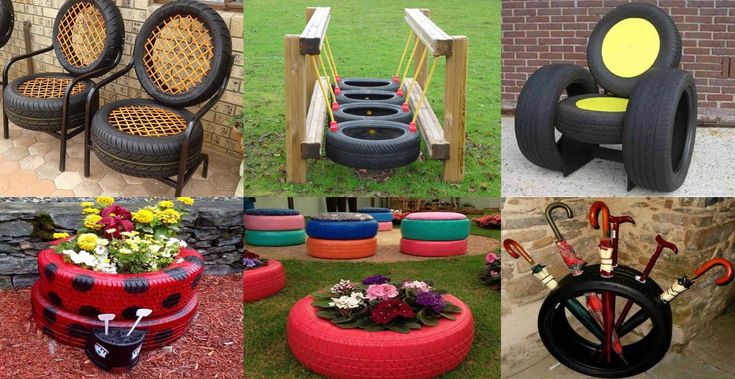
V. And in conclusion. To reduce stress on the brake system itself, use the Brake line locking system, i.e. blocking. After installing it on the car and pressing the button, it will automatically turn off the rear brakes. This will simplify your task and keep the car in its original technical condition.
And a snack for all readers: Fail and Win compilations of burnout.
Burnout is a trick in which the rear wheel breaks into axle box due to braking with the front brake and shifting body weight forward. It can be performed on the spot or in motion along various trajectories.
Motorcycle
It is enough to install the side protection on the motorcycle, because in the process of training, you can fill up the bike on its side.
A light clutch release machine will come in handy, because. you have to keep depressing the clutch.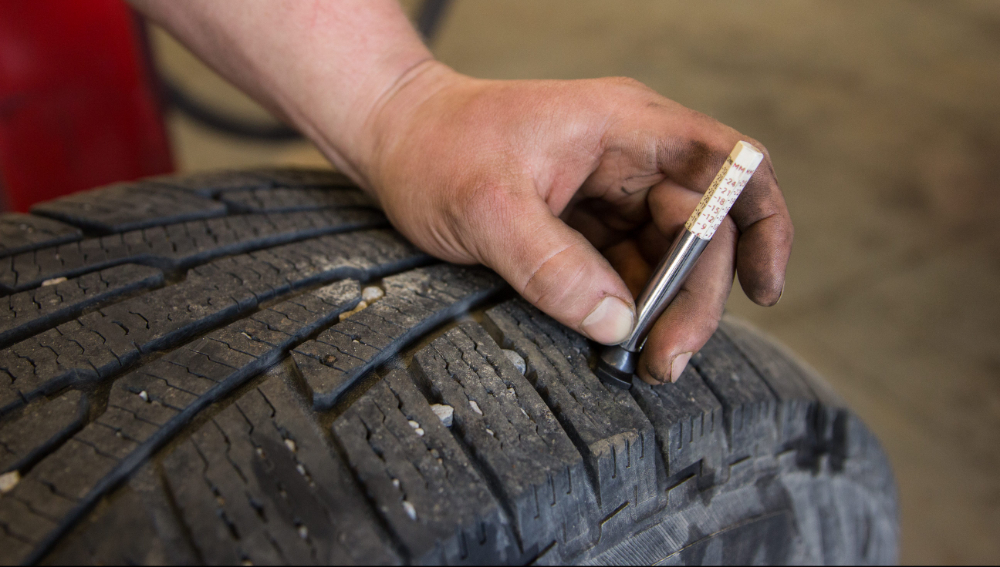 With a standard typewriter, your fingers will get tired much faster.
With a standard typewriter, your fingers will get tired much faster.
The pressure in the rear wheel does not matter much. The standard one is fine for training.
It is advisable to adjust the brake lever so that it is as close to the handlebar as possible. This will reduce the load on the fingers and allow you to feel the brake better.
Asphalt
The asphalt on the training ground must not be dusty. This is easy to determine by the front wheel. If it's all covered in dust, the asphalt is unsuitable.
Grain size doesn't matter much, but coarse grain will run out faster)
Burnout standing still
This is the easiest way! You can start with the front wheel resting against the wall.
Important points:
Do not let off the gas when the clutch is released, i.e. keep stable. Instinctively, I want to close the gas, but this can not be done.
Press as hard as possible on the fork at the moment of throwing the clutch, i.e. get up on your hands.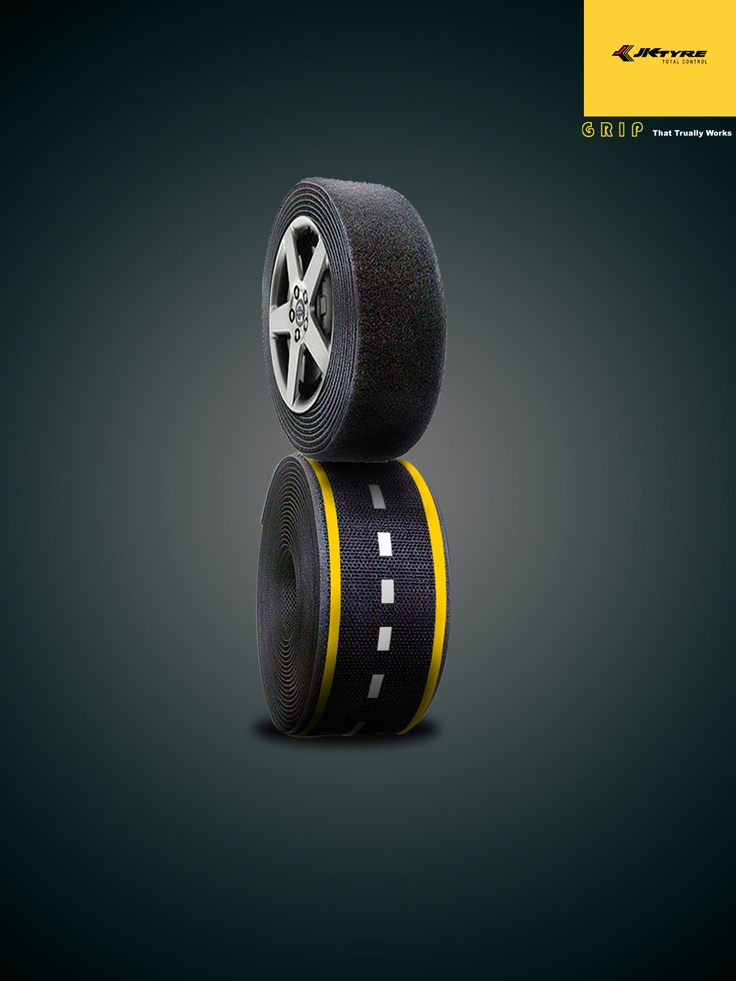
Block the front wheel completely. Do not slow down, but press the front brake hard and do not let go. At first, it will not be easy to keep the brake pressed and turn off the gas.
Burnout in a straight line
The main difference from the on-site burnout is that the burnout must be turned on on the go. In fact, it is easier, because. You can additionally load the fork by braking the front wheel. Therefore, in motion, the rear wheel can be torn off at low speeds (4-6 thousand).
Important points:
Shift your body weight as far forward as possible, standing up on your toes if necessary. At first, it will seem that you will fly over the steering wheel. If you don’t stop abruptly, then you won’t fly over)
Constantly cool the front brake. After several attempts, the front brakes become very hard.
Don't be afraid to release the front brake to go faster. Even if you completely release the front brake, nothing terrible will happen: the motorcycle will quickly accelerate in a straight line and the axle box will gradually turn into a hook.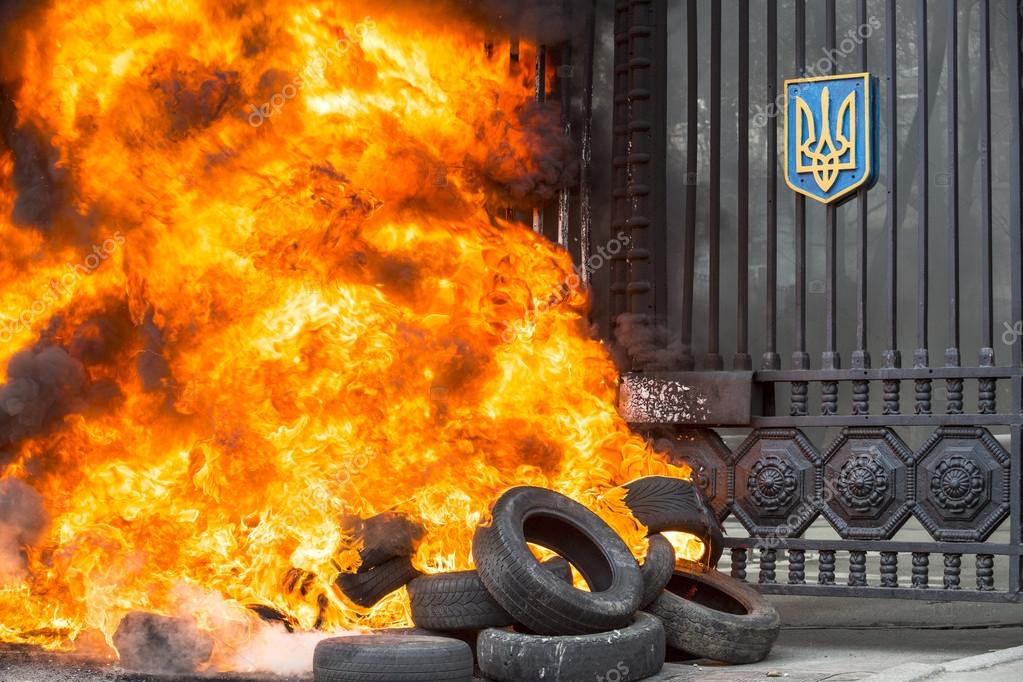
Dictionary
Burnout (English burnout) - “burnout, burning out”) - a trick in which the rear wheel skids on asphalt, releasing clouds of smoke from burning rubber. Performed both in place and with slow circular motions
Drift (English drift - “to demolish, move”) - movement with the demolition of the rear wheel. Achieved by more than necessary for just movement, the gas supply at the time of the breakdown of the rear tire
The easiest burnout done while standing still is a rather stupid trick. However, it allows you to understand the motorcycle a little more, and, in addition, it is the basis for a more complex technique of owning a motorcycle - drifting.
Even the simplest burnout is a dangerous trick. You should clearly understand the potential dangers that await you on the training ground:
the motorcycle may be pulled out from under you or thrown out of the seat;
A tire that is too worn out may explode during a burnout;
The main safety rule in stunt riding - the presence of a friend - also remains in force here.
And, of course, equip yourself to the maximum. At least in the learning process.
Since the burnout literally kills the rear tire before our eyes, it is better to use an old tire than to wash a new and soft rubber, as we did for a photo shoot. Moreover, hard rubber breaks into axle boxes much more easily than new. To perform a burnout, stunters use stale "killed" tourist tires, which initially have a harder composition than sports tires.
The smaller the contact patch of the rear rubber with asphalt, the easier the wheel slips. Therefore, it is better when the pressure in the wheel is standard - 2.5 bar. A flat tire will spread on the asphalt in a wide spot, it will be more difficult to let the wheel spin with it.
Hold the clutch
So, the bike is started and warmed up, you are equipped and ready for exploits. Burnout on the spot must be performed with both feet on the pavement. Squeeze the front brake firmly to keep the motorcycle from moving.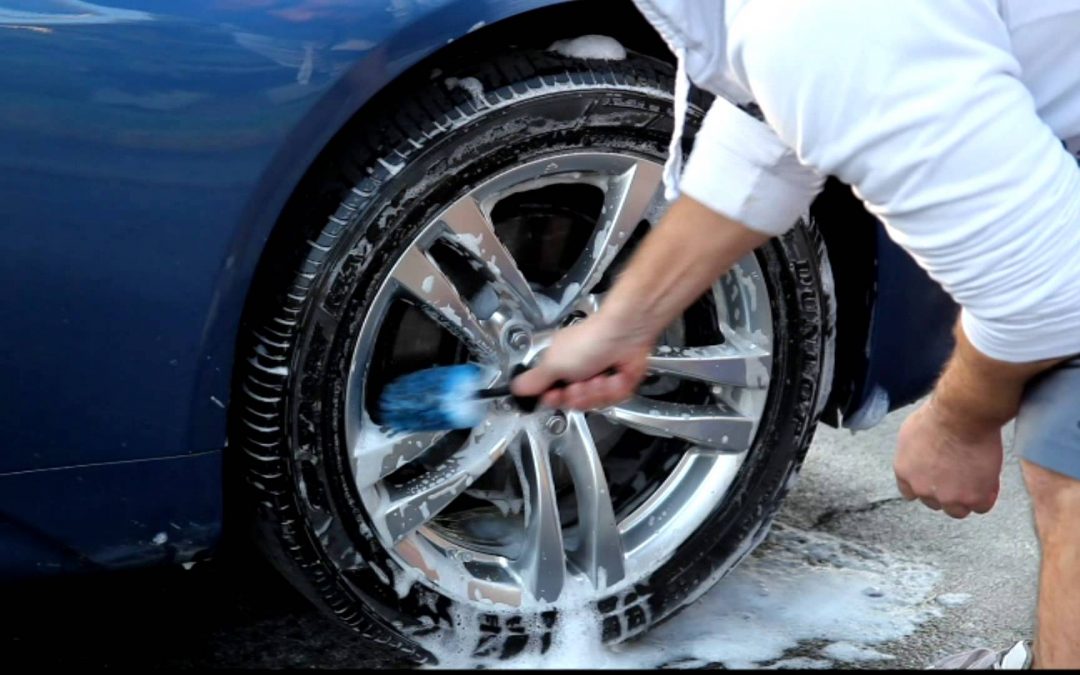 Make sure that the asphalt under the front wheel is dry and clean.
Make sure that the asphalt under the front wheel is dry and clean.
Without releasing the front brake, fully depress the clutch and engage first gear. It makes sense to lean forward a little to transfer body weight to the front wheel and unload the rear. Now, while holding the front brake, simulate starting off: gradually release the clutch with the addition of gas.
It is appropriate to recall that on modern motorcycles you need to squeeze the brake and clutch levers not with the whole five, but with several fingers (usually one or two is enough). The rest at the same time wrap around the handlebars, helping to control the motorcycle.
To safely end the burnout, fully depress the clutch and close the throttle, put it in neutral. Only now can you release the front brake. In case something goes wrong, immediately depress the clutch: this is the only way to quickly take control of the situation.
The main thing in a burnout is precise control of the front brake
To start the trick, add gas, gradually releasing the clutch
It's a pity for the tire! Our Super Duke's Metzeler Sportec M5's are good for track racing, not rubber burnout.
Asphalt circles
It seems to work, but is it still scary? No need to rush! It will take you a few tries to get the feel for the right amount of front brake lever pressure and the right amount of grip/throttle to get the wheel spinning.
After you have rehearsed the trick well, you can improve it a little. In order for the burnout to turn out beautiful, that is, the wheel immediately slipped and smoked heavily, you need to rest against the steering wheel, squeezing the front wheel into the asphalt, confidently open the gas to above-average speeds and smoothly and quickly release the clutch. During such a burnout, the rear wheel seems to float on the pavement, while the motorcycle can be pushed a little with the hips to the left and right.
When you feel confident, you can try to draw a circle with the rear wheel, gradually moving it to the side. Keep the front wheel in place, in the center of the circle
Text: Nikolay Respect Stepanenko, Taras Mytkanyuk
Photo: Ruslan Razgulyaev
June 7,
http://bikemagazine. com.ua
com.ua
Burnout, - slip, in professional slang, means warming up the rubber on a car standing still, that is, slipping of the tires themselves and rubbing them on the asphalt. As a result of the contact of tires with a hard surface of asphalt, they begin to warm up quickly and smoke appears from under them.
Burnout, the so-called slip, is used before races on a drag racing track, for better tire grip, as well as for better and more stable handling of a very powerful car on a rally track.
From its necessity, burnout - slipping quickly turned into a kind of entertainment, thus becoming an element of a certain show, where its participants show a higher level of car control using all its capabilities.
For burnout, i.e. for slippage, the following conditions are necessary:
1. A vehicle powerful enough to heat up the tires or the wheels won't spin at high speeds.
2. The car must be technically sound.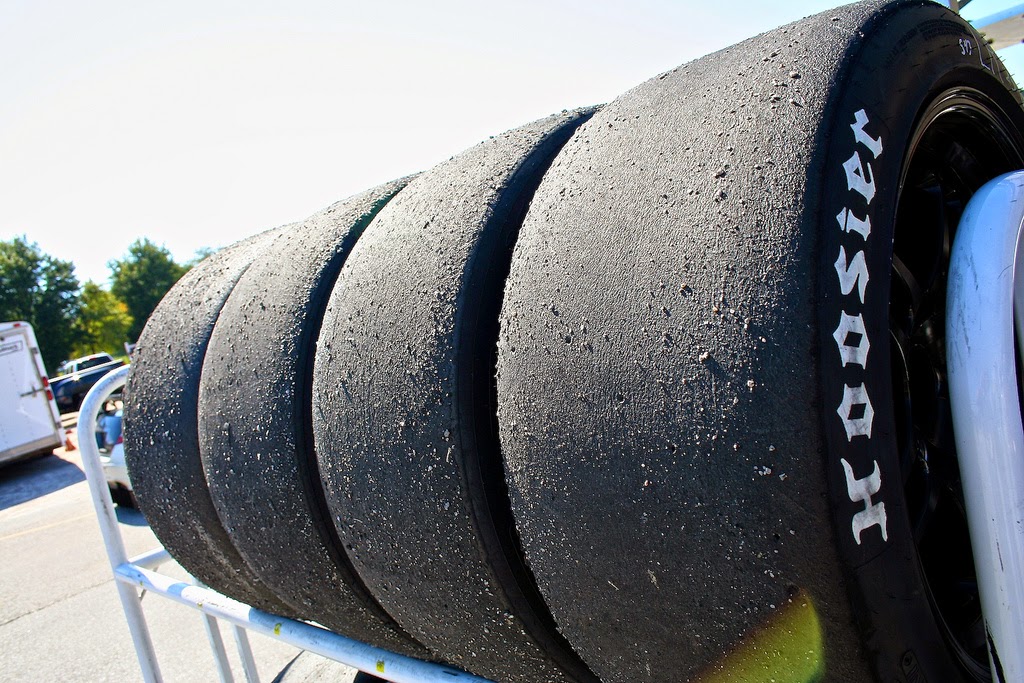 Applying this technique in practice, the loads on the engine, on the brake system, on the wheel bearings and on the suspension reach the maximum extreme values.
Applying this technique in practice, the loads on the engine, on the brake system, on the wheel bearings and on the suspension reach the maximum extreme values.
3. The car owner must be personally aware of the fact that such heating of the rubber can lead and sometimes will lead to serious technical breakdowns.
Attention!!! The article is written for one purpose, namely to show the basics of the burnout technique. It does not in any way call motorists to action. Any attempt to use this racing vehicle for any recreational or professional purposes may result in serious damage to the vehicle. Also, this type of activity can be dangerous both for the driver himself and for all those around him. This method of slipping should never be used in crowded places, as well as on public roads!!! This is a mandatory requirement for all motorists.
I. Make sure your vehicle is suitable for burnout. It must have a sufficient amount of horsepower, for this, cars that actually have more than four cylinders, which are equipped with a manual transmission, are usually suitable for this. And for a greater effect, smooth tires are also needed, which have a large area of \u200b\u200bthe so-called contact patch with the asphalt surface, which can give out a lot of effective smoke.
And for a greater effect, smooth tires are also needed, which have a large area of \u200b\u200bthe so-called contact patch with the asphalt surface, which can give out a lot of effective smoke.
*If your car has an automatic transmission, then it is strictly forbidden to use burnout - slippage. It will lead to the destruction of the transmission and costly repairs to the car itself.
II. Engage first gear, then fully depress the clutch and gradually begin to increase engine speed. In a quick but smooth motion, begin to release the clutch pedal, while not ceasing to press the gas.
Attention!!! To prevent the speed from going into the red zone, work with the gas pedal very carefully, you do not need to press it all the way to the floor. The ideal execution technique is shown in the following video. (1.00 minute video). Play with the gas pedal, alternately pressing it harder, then weaker, while constantly keeping the speed high but safe for the engine. !!!
!!!
The average range of these revolutions should be between 3500 - 4500 rpm. On modern vehicles, this range is closest to peak torque.
After the clutch is fully released, place your left foot on the brake pedal. In order to press with the right force with your left foot on the brake pedal, some practice is required. From the first time (and sometimes from the tenth) it is very difficult to do this.
The braking force must be more than sufficient to keep the rear wheels of the car still turning freely, while the car itself remains in place or continues to move very slowly forward.
Attention!!! Attempts to make a burnout for the first time - slipping, of course, will initially be unsuccessful over and over again, until you learn to feel the smallest nuances of the car. In this case, there is a possibility of overheating of the clutch itself, up to its failure. So try to keep an eye on unusual and extraneous odors that appear in the interior of the car, as well as the very behavior of the car when you turn on the gearbox and squeeze the clutch, exactly at the moment the pads converge with the clutch disc !!!
III. On the front wheel drive burnout is somewhat easier. To do this, you need to hold the parking brake, then raise the engine speed and just as smoothly and quickly release the clutch pedal. As a result of such a fast (almost instantaneous) increase in the speed of rotation of the front wheels, the car will not go forward and will not stall, remaining in one place, it will begin to release long-awaited and long-awaited clouds of smoke from under its tires.
On the front wheel drive burnout is somewhat easier. To do this, you need to hold the parking brake, then raise the engine speed and just as smoothly and quickly release the clutch pedal. As a result of such a fast (almost instantaneous) increase in the speed of rotation of the front wheels, the car will not go forward and will not stall, remaining in one place, it will begin to release long-awaited and long-awaited clouds of smoke from under its tires.
Burnout spinning is much easier with front wheel drive. But at the same time, there is one important nuance, the handbrake of the car must be in good working order, it must be able to hold the car in place.
IV. If the car does not have enough power for such experiments, for such a case, the connoisseurs have some tricks in stock that help one hundred percent to break the wheels of the car into slipping.
1. Lighten your car, especially for rear wheel drive vehicles. There should not be anything superfluous in the trunk, not even a spare wheel. Before you drive to the site, take care of this in advance. The axle of the car will unload a little and it will be easier for her to break the wheels into slip.
There should not be anything superfluous in the trunk, not even a spare wheel. Before you drive to the site, take care of this in advance. The axle of the car will unload a little and it will be easier for her to break the wheels into slip.
2. Burnout Rolling back at low speed with the clutch depressed, you do almost everything the same as in previous times. Release the clutch, then press the gas, but do not press the brake. As a result of multidirectional forces, one of the forces will be directed downwards, and the engine force will be directed in the opposite direction, that is, it will pull upwards, in this case the car will remain in place without the brakes being pressed.
3. Try this on a wet surface. Grip on asphalt will be much weaker than it could be in dry weather, and this will definitely increase your chances of success.
V. And in conclusion, the last. To reduce stress on the brake system itself, use the Brake line locking system, i.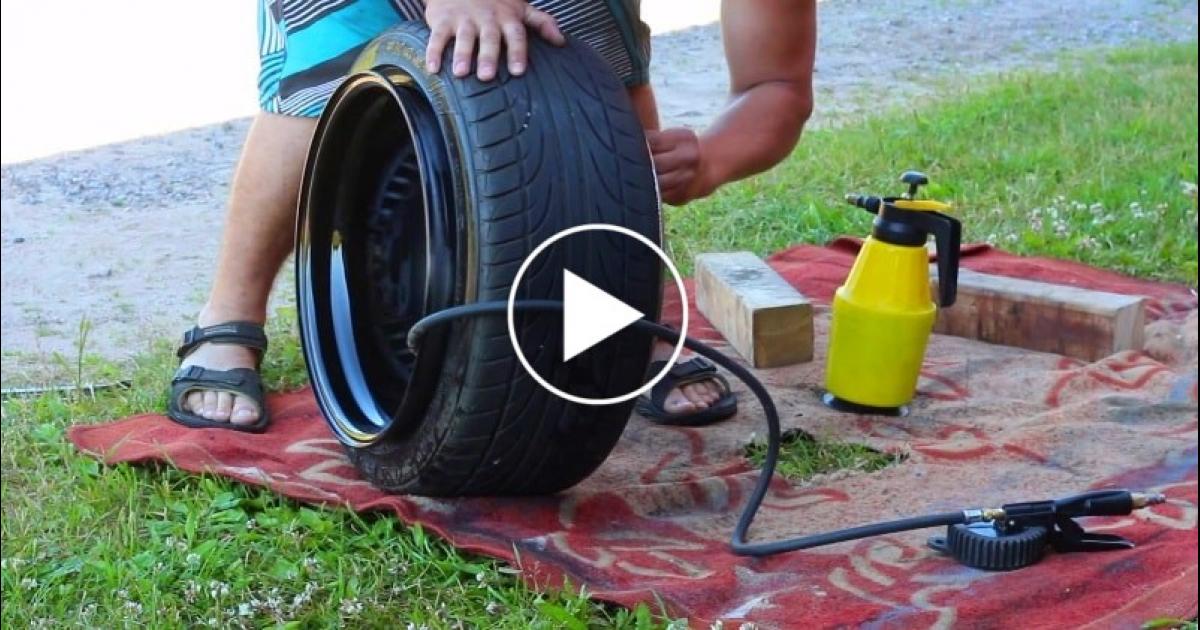 blocking. After installing it on the car and when you press the button, it will automatically turn off the rear brakes. This will simplify your task and keep the car in its original technical condition.
blocking. After installing it on the car and when you press the button, it will automatically turn off the rear brakes. This will simplify your task and keep the car in its original technical condition.
And for a snack for all readers - Fail and Win compilations of burnout.
4
The desire to kill rubber is no less inherent in the owners of ordinary road builders, not to mention streetfighters. Sometimes even chopper lovers sin with this. For those who are “out of touch”: burn out is not at all a veiled way for the author of the article to obscenely “lower” the audience that is “out of business”, but the English version of the Russian “annealing of rubber”.
Burn out comes in four types, at least the main ones, but it is not possible to count all of its varieties. After all, you can do a burn out, standing right in front of the motorcycle or deliberately putting it on its side. There are dozens of options - such purely stun rider tricks, such as, say, burn out with a simultaneous wheelie or with a half-naked girl on a gas tank .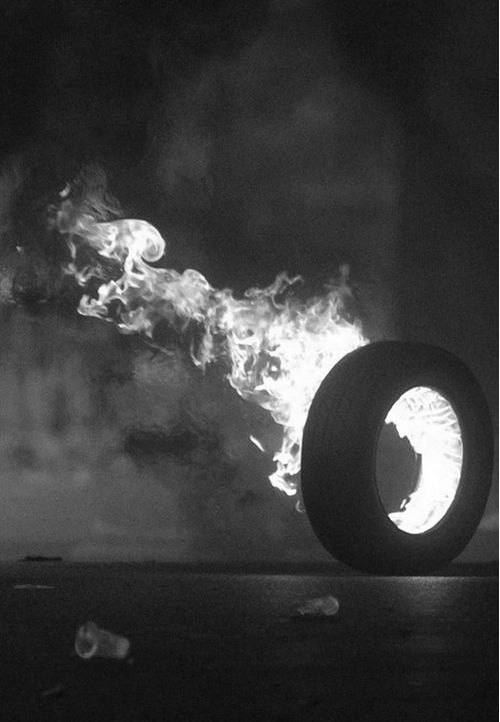 ..
..
But this is already a very advanced level, and we are interested in the "basic", so I'll start in order. The simplest and easiest burn out is a simple killing of a tire while standing in one place. The execution technique is quite simple, at least from a theoretical point of view. The front brake is pressed and gas is added at the same time. Yes, I almost forgot, it would be nice to also include first gear and release the clutch ... This is where the greatest difficulty lies.
Applying the front brake is not a big task, even one well-fed scooter rider I know can handle it (he seems to never let it go at all...). But do not be afraid to properly unscrew the gas handle and at the same time not everyone can “spit” with the clutch lever. Of course, because a completely justified fear lives latently inside, what if the motorcycle still goes? As a result, the clutch is not released to the end, but is kept in a half-squeezed state. I’ll say right away: you don’t need to do this, this is a direct way to kill clutch discs, and much faster than you can imagine!
To protect yourself as much as possible at the initial stage of training from disk destruction, I would recommend resting the front wheel against some high curb - this way you can minimize the load on the clutch and better feel the moment the rear wheel starts to slip without excessive extreme. Literally after two or three firings near the curb, you can begin to do the same on a straight surface - I assure you, there is nothing difficult in this. The video shows an example of such a burnout with detailed instructions.
Literally after two or three firings near the curb, you can begin to do the same on a straight surface - I assure you, there is nothing difficult in this. The video shows an example of such a burnout with detailed instructions.
But such, so to speak, burn out is the lot of "students", the initial level. Much more effective (and more difficult) is the slipping of the rear rubber with the simultaneous forward movement of the motorcycle.
To understand the technique of its performance, it is assumed that you have already mastered 100% with the first type of burning rubber in the eyes of the public.
The main difficulty in annealing the long-suffering rear cylinder while driving is to break it into slip. As a rule, this is done in first gear, because it is in it that the engine has the most traction. But only decent torque is usually not enough. It is necessary, as much as possible, to try to load the front wheel, which will reduce the pressure on the rear (that is, reduce the adhesion of the tire to the surface), as a result, facilitating the moment of its breakdown into slip.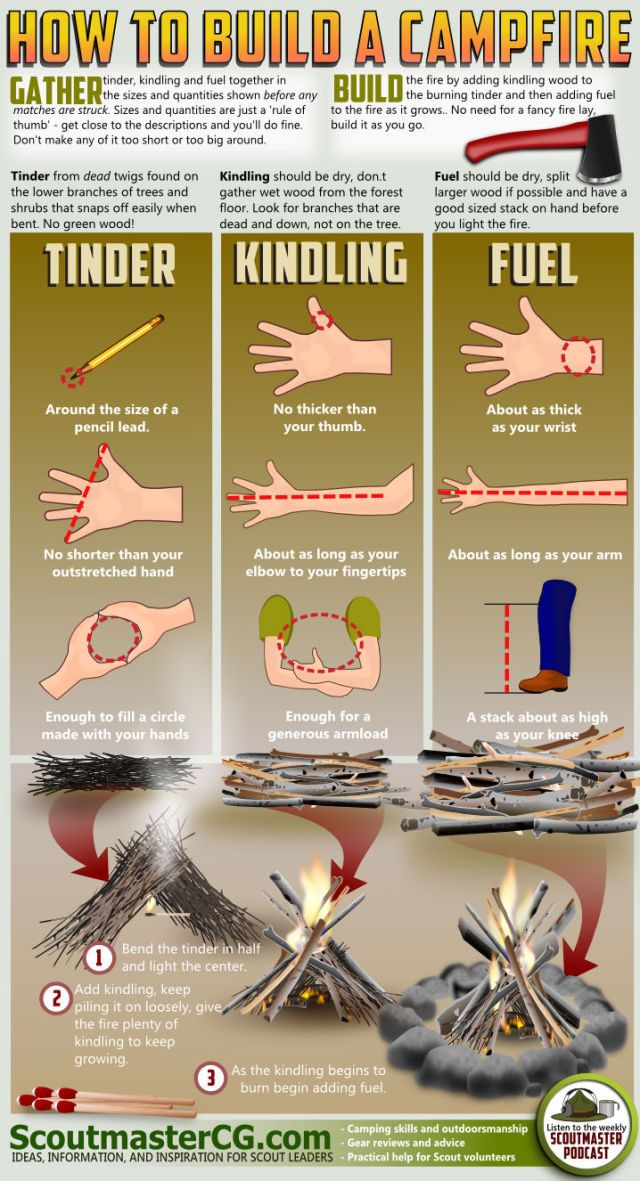
In some ways, this resembles the necessary manipulations to put the motorcycle into the wheelie, only with the difference that the speed will be much lower (something around 20 km / h). On the semi-clutch, we spin the engine, move forward as much as possible - here you can not be shy and settle almost on the dashboard - and sharply release the clutch. If everything is done correctly, then the rear wheel will definitely slip into slip. An important point - with all the manipulations described above, the right hand slightly presses the front brake, but, I emphasize, just slightly, otherwise the motorcycle will not be able to move forward, and if you overdo it with the brake, you can completely lose the device. The left hand should always be on duty on the clutch lever for safety - but it is to be on duty, and not to keep the clutch in a half-squeezed state, thereby sentencing him to an untimely death!
The less pressure you put on the front brake lever, the faster your speed will be and vice versa.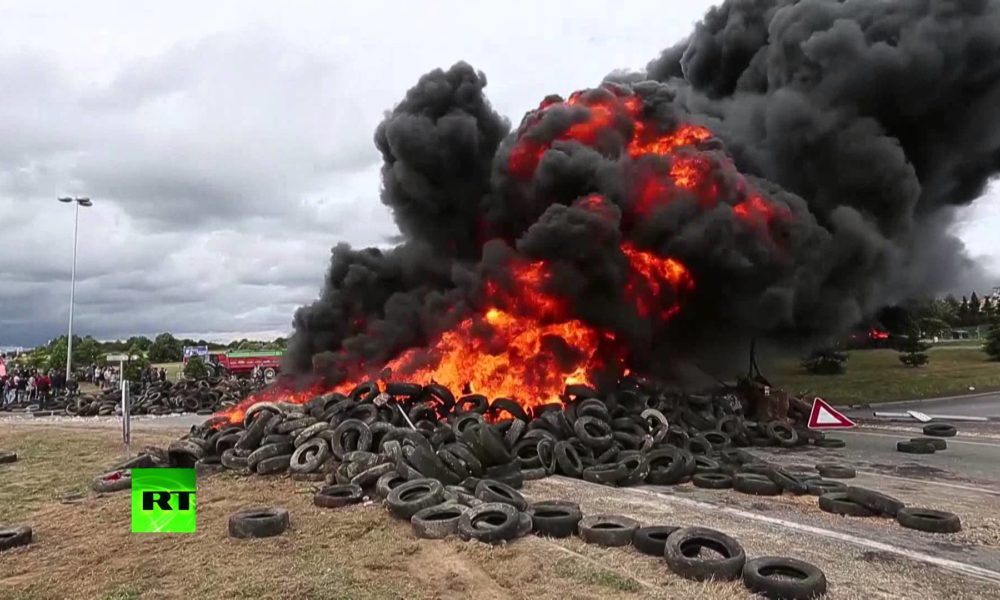 Much here, of course, depends on the motorcycle - the more powerful it is, the easier it is to maintain high speed while grinding the asphalt with the rear tire.
Much here, of course, depends on the motorcycle - the more powerful it is, the easier it is to maintain high speed while grinding the asphalt with the rear tire.
If your machine has at least fifty horsepower, then once you get comfortable with the execution of this technique in first gear, you can try it in second. After all, the speed on it will be much higher, and the external effect is much stronger! But the higher the speed, the more difficult it is to keep the rear wheel in constant spin, and the cost of error is much higher than in the relatively slow first gear.
It should be noted that annealing rubber in motion is possible in two ways. The first is when the motorcycle is standing still, its pilot breaks the rear wheel into slip, and after that it starts moving. The second method is considered more spectacular and complex (and not unreasonably). When burn out is performed right from the move. It looks many times more spectacular, but it also requires much more sophisticated equipment and skills. It's one thing to spin a wheel in static, and quite another to do it on the go...
It's one thing to spin a wheel in static, and quite another to do it on the go...
Another way to blow smoke in the audience's eyes is to stand next to the motorcycle and "sentence" the rear tire. The execution technique is practically the same as the most primitive, “initial” burn out, though with one small “but”. A penguin can just stand next to the motorcycle, so we release the front brake a little, turn the steering wheel a little, help the motorcycle a little more by tilting. As a result of all the above actions, we get a rotational movement of the apparatus with smoking rear rubber around you, so beautiful and attracting the audience so much with its irresistible talent . In words, all this looks pretty easy, but in practice it will take a lot of training to feel the slightest desire of your steel horse to get out of control and stop it in advance. The best “whip” here will also be a lever, clutches, and you still have to quite actively move your legs in order to keep up with the motorcycle . ..
..
Before I get to the description of the most complex and certainly the most beautiful, the fourth type of burn out, the so-called circular burn out, I want to dwell on the type of rubber most suitable for this kind of exercise.
The appearance of the front tire does not bother us at all, but the “oaker” the rear cylinder will be, the longer you can practice polluting the environment with products of burnt rubber waste. Accordingly, a rear tire is preferable to a touring plan. The worse it has grip, the better it is for burn out! Perhaps this is the only case when it is desirable to have the lowest possible coefficient of adhesion of rubber to asphalt. Therefore, long live models such as Bridgestone BT 020, Metzeler Marathone, Metzeler Roadtec Z 6, Metzeler ME Z 4, (of course, this list is far from complete, but the essence, I think, is clear)...
All of them have proven to be excellent long-livers, just what we need. Especially in this series, I want to note the Metzeler Roadtec Z 6, which managed to stretch about 14,000 km on my Suzuki TL 1000 R, thus setting a kind of longevity record on the rear wheel of a powerful sportbike with a not quite sane owner. (Before that, I considered Bridgestone BT 020 ultra-resistant to abrasive asphalt, nursing an average of 10,000 km).
(Before that, I considered Bridgestone BT 020 ultra-resistant to abrasive asphalt, nursing an average of 10,000 km).
So, the motorcycle "writes" circles of an extremely small radius, while polishing the asphalt canvas. Such a show can hardly leave anyone indifferent, immediately gathering a huge crowd of onlookers. But before you try to master this sophisticated kind of mockery of technique, I would recommend bringing the skills of owning the second burn out element to automatism.
From the point of view of execution technique, this element is not in vain considered the most difficult, since the motorcycle turns with a rather strong inclination, but the speed when “drawing” circles on the pavement is not high, which means that the centrifugal force acting on the motorcycle does not allow it to fall, will "help" less than usual. All this will require the performer to have a great sense of balance, multiplied by a certain amount of recklessness (to be honest, I have never met anyone with even a small spark of common sense in a crazy look among manic burn out lovers.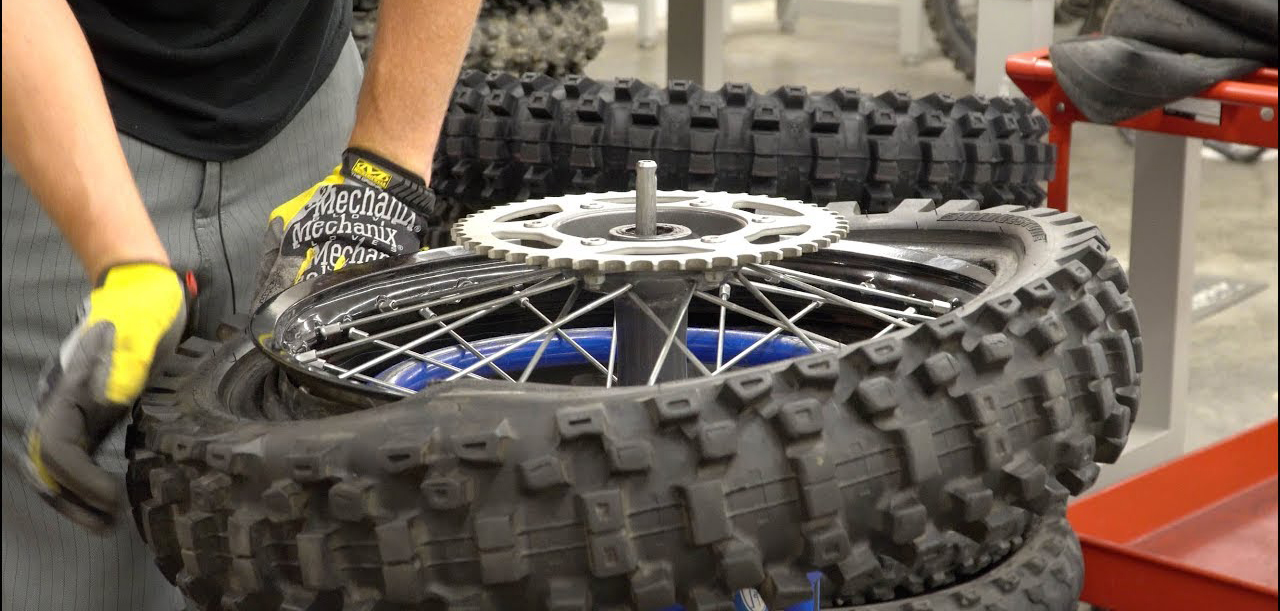 ..).
..).
In principle, the basic elements of the technique remain the same, that is, the clutch is completely released, and the hand is only “on duty” on its lever, the rotation speed is controlled by gas, front brake and ... tilt! Circular burn out with a strong inclination (it turned out to be an eerie phrase, but very accurately reflecting the essence of the matter) is a sign of aerobatics that requires filigree motorcycle ownership and your own excellent vestibular apparatus.
The fact that on the way of its development the motorcycle will meet with asphalt more than once is not even an assumption, but an unambiguous statement. But the speed with such contacts is low, so the damage is mainly purely cosmetic. After all, if you are seriously going to do this, in fact, a purely stun rider element, then your motorcycle should be hung with numerous sliders to make the envy of the Christmas tree. It’s also a good idea to install shortened clutch and front brake levers specially designed for “light slippery”. I would also include rear-view mirrors and turn signals as extremely unnecessary devices. Please note that the last remark is true only for the greater safety of the motorcycle in case of possible falls, but it works in the opposite direction on a public road.
I would also include rear-view mirrors and turn signals as extremely unnecessary devices. Please note that the last remark is true only for the greater safety of the motorcycle in case of possible falls, but it works in the opposite direction on a public road.
The most experienced annealers, writing regular circles with a decent inclination and speed of rotation, shrouded in clouds of smoke of their own rear tire dying in the name of a beautiful show, still allow themselves to completely let go
of the left hand! Thereby clearly confirming that there is no need to “hang” on the clutch lever.
Naturally, with such “exploitation”, the issue of the appearance of a dirty underside tire is sometimes solved literally in a matter of minutes. The main thing here is not to click through e ... in the interests of censorship, we will write: with the oral cavity, since in the last moments of his short life on a stunt rider's motorcycle, the rear cylinder usually explodes, overflowing with indignation and the feeling that he was cruelly framed. Immediately after this wonderful moment, if the "showman" is not ready for it, a fall may follow ...
Immediately after this wonderful moment, if the "showman" is not ready for it, a fall may follow ...
In general, a little more perseverance and practice, and everything will definitely work out. Just don't forget to include, in addition to clutch discs and a certain amount of rear tires, a tire fitting service in your budget. And as you wish, you have to pay for a beautiful show...
"Motor Review 10.06" magazine
WARNING! DO NOT USE THE BURNOUT APPLIANCE IN PLACES OF A LARGE CLOUD OF PEOPLE AND ON PUBLIC ROADS!
Burnout, an effective tire warm-up technique or a spectacular way to show off in front of others. In any case, the ability to burnout will help to better feel the car on a manual transmission and make a couple of tires unusable.
Auto mechanics and physics expert Jason Fansk of the Engineering Explained YouTube channel once again hosted a cultural enlightenment for his viewers. In the new video, Jason detailed the basics of the burnout technique, citing his Honda S2000 with a manual transmission as an example.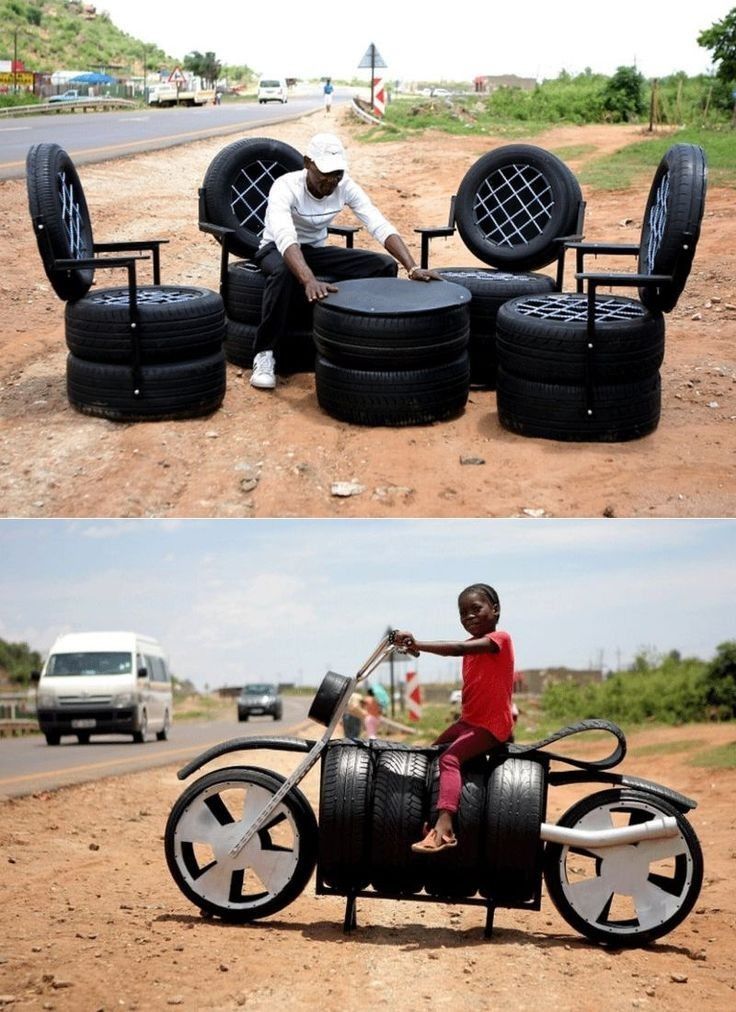
First, the video tells in what cases this technique is used and why it is needed.
-Cold grip may be low and should be increased if necessary. If you warm up the tires, their temperature will increase, they will become softer and grip with the surface will increase. Where is it used? Mostly in drag racing.
Next mentions (1.26 min video) that the process on an automatic transmission is quite simple. Press the brake, then press the gas. As soon as the wheels that are being driven have begun to rotate, weakening and increasing the pressure on the brake pedal, it is necessary to regulate the rotation of the wheels and prevent the car from moving.
Text on top: Make sure traction control is off!
On cars with manual transmission, the narrator continues, things are somewhat more complicated (1.47 min video) . For this you need:
As soon as you manage not to stall at this moment or drive away with slipping forward (in particular, due to the likelihood of uncontrolled acceleration of the car, the burnout is so dangerous both for others and for the driver himself), and gas, as well as on automatic transmission.